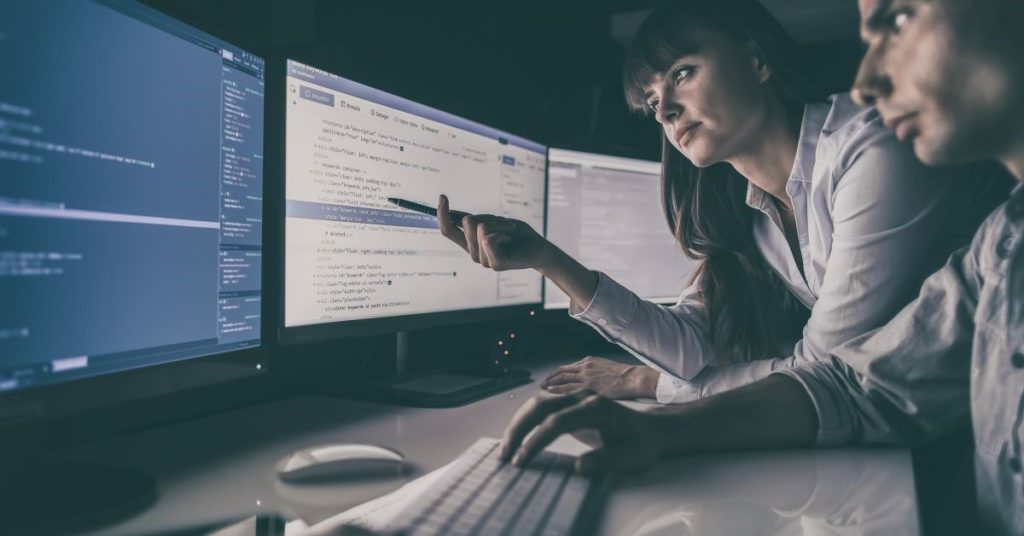The technologies that exist today make remote collaborative working across companies easy. The same applies to providing remote support services for IT systems.
You can jump on a videoconference call using any number of applications. At the end of the call, you can give control of your computer to the third-party engineer you’ve been collaborating with, so they can access your company’s IT system to complete the necessary changes.
You can even watch the engineer do this, all in real-time, but you probably won’t as you have other tasks to complete and meetings to attend.
There’s more. If you need to share a document, no problem. Just open the chat facility and click send. Bring another engineer, vendor, or colleague in on the call? Yep, you can do that too.
Not only can you do all the above, but you can do it regardless of location. The engineers and vendors collaborating with you can be on the other side of the world or they can be in the building next door. It makes no difference to the capabilities of the technology.
You can even take it a stage further using Microsoft’s HoloLens mixed reality technology to allow those collaborating on the project or task to see and work with physical objects even though they are not in the same location.
All the above is relatively straightforward, but there is one major flaw – security.
The Security Challenge of Remote Collaborative Working and Support Provision
Let’s look at the above scenario again.
- You jump on a videoconferencing call using a non-enterprise application, opening your organisation to multiple security risks.
- You let an engineer from another company take control of your computer to make necessary updates or changes to your IT system, but how do you know what they are really doing? Even if you sit and watch, you may not know everything that is being done.
- In the hours, days, weeks, or months after the engineer finishes, you might need to see and understand what was done to, for example, correct an error that has occurred. You have no record of the work, however, so have no straightforward or quick way of checking.
- You send an internal company document through a chat facility, but that document is now on the IT system of one or more third-party companies. It could then be accidentally or deliberately shared with one of your competitors.
You get the idea.
The Security Reality
Remote collaborative working and support provision are easy with technologies that currently exist.
This doesn’t mean those technologies are suitable for corporate environments, however. In fact, with many of the technologies out there, particularly those where there are known and suspected security flaws, they are not only unsuitable but also dangerous.
Applications such as Google Hangouts, Facetime, WhatsApp, Instagram, Zoom, etc are convenient and even beneficial for personal use. However, the incorrect use of these platforms creates significant risks, raising questions over their suitability for use in corporate environments.
You then need to throw into the mix the growth of the gig economy, where self-appointed experts provide services on a task by task basis.
Technology makes it possible to collaborate with freelancers, but is this really the best approach? How do you manage Non-Disclosure Agreements? How do you ensure the freelancer has the necessary competencies, systems, and policies to meet your compliance requirements?
As with the technology question, just because working with freelancers is possible, doesn’t mean you should.
That said, you don’t need to abandon the idea of remote collaborative working and support with third-party companies and others. Instead, you need to adopt a similar approach to the design and commissioning of your internal VPN.
This means developing proper procedures and policies.
It also means using technology that has enterprise-focused security at the core.
The Microsoft Teams Solution
Microsoft Teams is central to the above solution. It has all the functionality required to work collaboratively and remotely across different organisations.
It also has all the security and control functionality required to ensure your organisation’s IT infrastructure, intellectual property, and confidential data remain secure.
Let’s go back to the example above:
- You connect with third-party engineers and vendors in a Microsoft Teams videoconferencing call that you set-up. This gives you control over all aspects of the call in a safe environment protected by Microsoft’s enterprise-level security.
- You can let an engineer from another company take control of your computer using Microsoft Teams AND you record everything they do so you have video evidence and backup if it’s ever required in the future.
- Instead of sending an internal company document, you share it within Microsoft Teams, ensuring you retain full control of access and distribution.
Protecting Your Organisation in the Remote Working Era
Remote working, remote collaboration, and remote support will become more common in the months and years to come. After all, remote working offers huge productivity, efficiency, and cost-saving benefits.
The technology that is currently available has made remote working too easy, however, exposing companies in all sectors to significant security risks.
Transforming your approach and using the right technologies mitigates these risks, allowing you to take advantage of the benefits of remote working while keeping your company’s systems, assets, and data secure.

